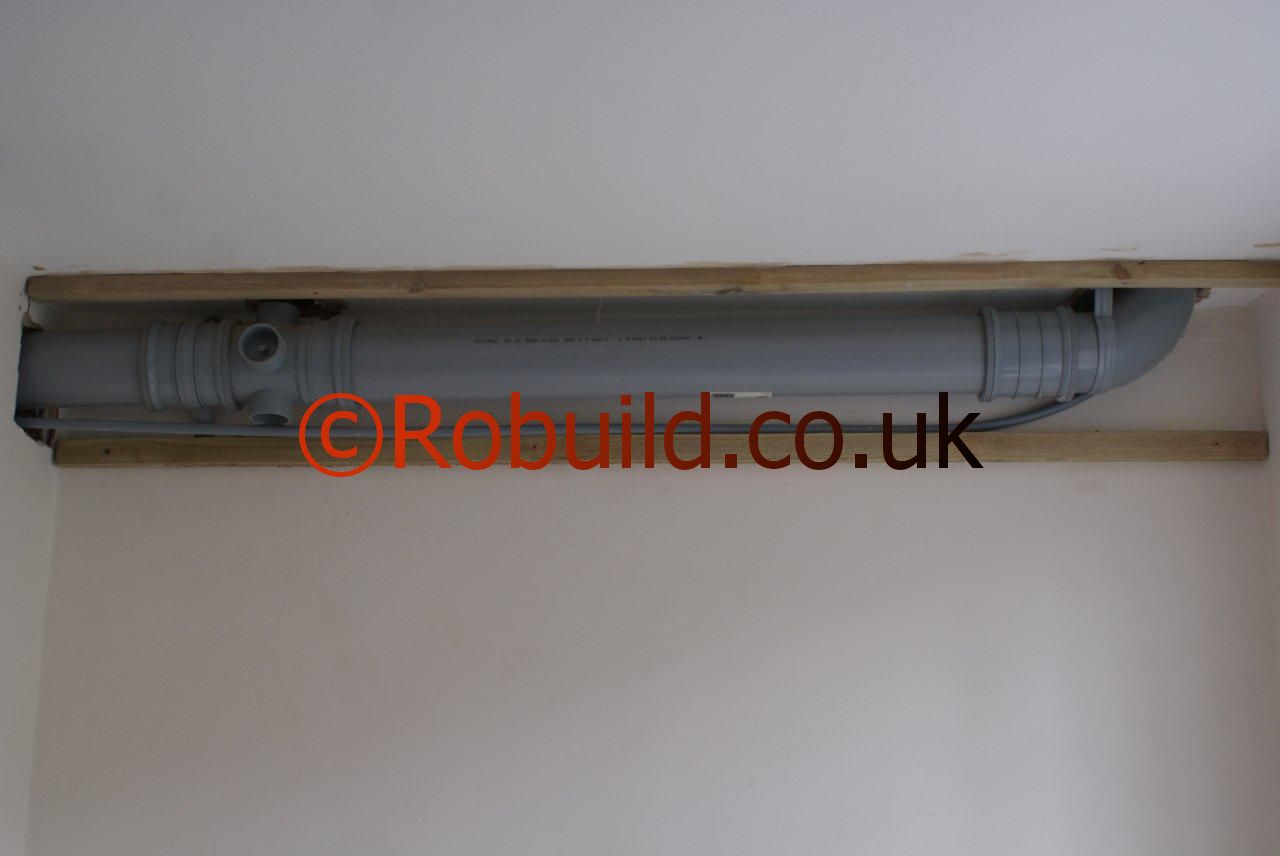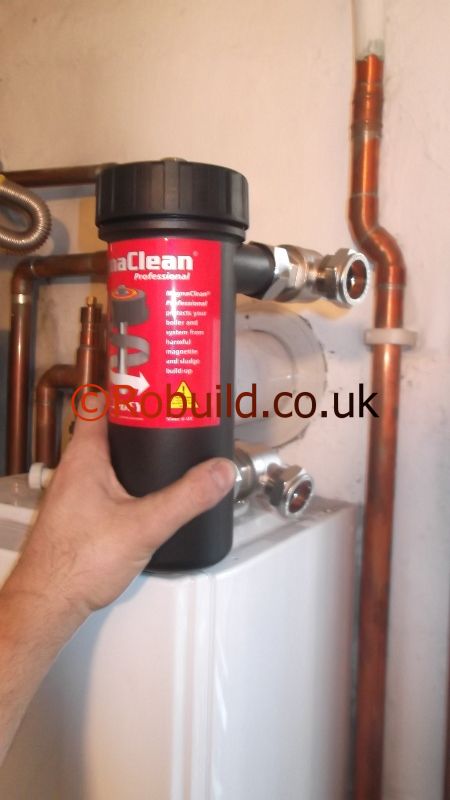Joints and fittings for plastic pipes
Plastic pipes are mostly used for drainage plumbing. WCs,wash basins, sinks, baths, showers, washing machines, etc
With compression fittings for plastic pipework a special sleeve is inserted inside the pipe end to prevent it becoming distorted where the nut on the fitting is tightened. If you have difficulty inserting the sleeve, carefully apply heat to the end of the pipe. This will soften it sufficiently to allow the sleeve to be slipped in. To assemble the joint, start by placing the nut and then the compression ring on each pipe end. Insert the sleeve and then push one pipe end into the body of the fitting and tighten the nut by hand. Finally use a spanner on the nut but be careful to avoid overtightening (a couple of turns should be sufficient). Then repeat the procedure for the other pipe end to complete the joint.
Solvent welded joints are easy to make and exceptionally strong. A chemical is coated over both surfaces of the joint which welds the plastic surfaces together and, provided the instructions are followed carefully, there is little that can go wrong.

Socketed pipes or a special separate fitting, are used with this method. First ensure that the surfaces to be welded are completely clean and grease free. Manufacturers usually supply a special cleaner for this. Then coat the two surfaces thoroughly with the special solvent cement. Note that you should always use the solvent recommended by the manufacturers as some solvents are not suitable for particular plastics. When both surfaces have been coated all that remains is to insert the spigot end of the pipe into the socket of the other or into the special fitting as far as it will go (a ‘stop’ is provided to prevent you pushing it too far). Then give the pipes or pipe and fitting a twist to distribute the solvent evenly. Wipe off any excess solvent squeezed out of, the joint and leave the joint for between 12 and 24 hours (according to the manufacturer’s recommendations) before testing.
The advantage that rubber ring-sealed joints have over other methods is that allowance is made within each joint for thermal expansion. With this joint an ‘O’ or ‘D’ shaped rubber ring is first inserted into a groove in the socket end of one pipe (or into a separate fitting). A special lubricant – soap can be used if the manufacturer does not supply one-is smeared over the spigot end of the pipe and the pipe is then pushed firmly into the socket or fitting as far as it will go. It is particularly important to ensure that the rubber ring does not become displaced during fitting, so the two pipes must be perfectly in line during this operation. Note that the end of the spigot should be chamfered to about 15 degrees for easy insertion.
This chamfer is normally included in the spigot end during manufacture, but if you have to cut the pipe use a file to chamfer the cut end. When you have pushed the pipe right up to the stop, withdraw the pipe a certain distance to allow for an expansion gap. This gap varies according to the material used. Some manufacturers put a mark on the pipe near the end and others give instructions as to how far to withdraw the pipe.
Installation details
The manufacturer’s instructions regarding the installation of their pipework should be closely studied and followed exactly. The main factor to take into account is thermal movement. If your pipes are jointed with the ring seal method you have no problems as allowance is made, as described above, for expansion in every joint. You must still, however, be careful that no tight restrictions are placed on the pipes themselves. Pipe clips (spaced at manufacturer’s recommended intervals) must not be so tight as to restrict the expansion of the pipe. You must also leave suitable gaps wherever pipes pass through walls.
The solvent welding method of jointing, however, prevents any movement in the joints and allowance has to be made elsewhere in the system. This is done by incorporating special expansion couplings at specified distances apart. Providing you take particular care to read all instructions thoroughly the actual physical work involved in installing a plastic pipework system is quite straightforward and easy, and you will have a system that should be maintenance free and exceptionally long lasting.



